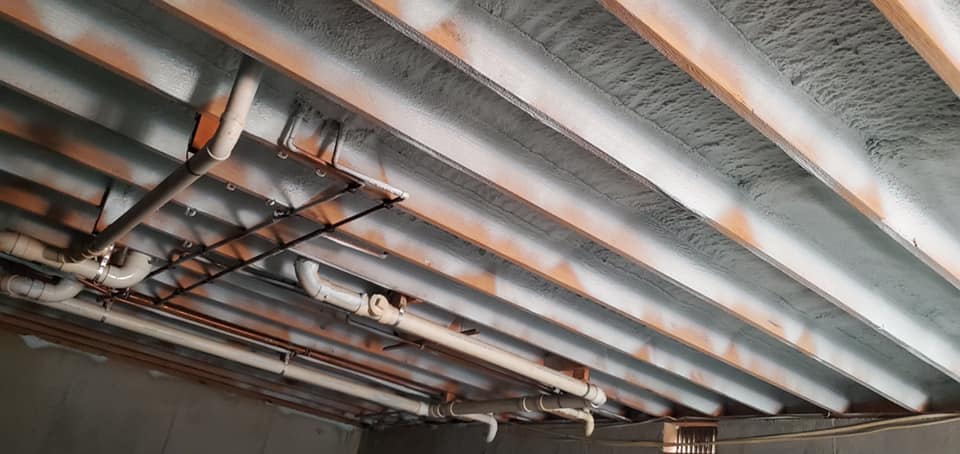The three of us were sitting on the sofas in the small living room of the 1200 ft2 home. Mr & Ms Homeowner, and myself.
Two days earlier, the attic re-insulation job had been pre-sold on the phone in our virtual appointment. This was my site evaluation.
My Favorite Question
I asked this very strategic question: “What is the single most important motivation for making this investment in your attic?”
He looked at her, and she spoke up right away, “Bob, I smell that musty attic smell all over the house. And I hate that my clothes smell musty.”
I immediately thought, “Oh God, help me! Odors are the most difficult issue to solve, (along with sound issues), because they are so subjective.”
Everyone has a nose, and knows how to use it.
As a side note, several years earlier we had sprayed the subfloor of this house, using 2” of closed cell spray foam insulation.
Since then, he had upgraded the windows in his 1958 house with double-pane replacement windows.

The Unintended Consequences
My work in the attic was about to tighten this house like a Tupperware, and after 20+ years of doing this, I am familiar with the unintended consequences!
When I climbed into their attic, I discovered that the attic was very poorly ventilated. One gable vent was sealed with plywood, and the roof vent was sealed with roofing felt! Ventilation was reduced to soffit vents with one small gable vent.
In addition, about 1/3rd of the attic had no insulation. Uncontrolled air infiltration was rampant through the gaps, holes, penetrations and top plates between the living space and the attic.
The HVAC is under the house in the vented crawlspace, with two large central Return floor vents.
The attic access is a scuttle hole located in the short hallway ceiling.
Ms Homeowner’s closet is a small bedroom converted into her large walk-in closet. There is one Supply vent in the floor, and no Return vent.


Here were my recommendations:
- Completely remove the old attic insulation, prep & airseal the attic floor & access hatch, and install all-borate cellulose to R-40. Test-out with a blower door.
- Install a dedicated Return Vent in her closet.
- Install more attic ventilation:
– “Cut open” the roofing felt to allow the ridge vent to operate as designed.
– Open-up the gable vent that is sealed with plywood. - Install a humidistat to monitor the humidity in the house.
- Clean the air ducts, including the evaporator coils of the AC, and install a charcoal-impregnated hvac filter.
- Confirm that the air duct system is sealed.
Is attic ventilation the source of the “musty odor” my clients were smelling in the house?
I believe so. The subfloor is sealed with closed-cell foam insulation, and the windows are tight. The one bathroom has a working exhaust fan. Where else can it originate?
- The dishwasher?
- Discharge pipe of the washing machine?
- Dry plumbing trap(s)?
With a semi-tight home using a forced-air hvac system, it’s not uncommon for a homeowner to get a “whiff of the attic smell” under certain conditions.
Balancing the pressure differential that exists between the living space and the attic should normally do the trick! Get that attic ventilation opened up as much as common sense allows!

Recommended Attic Ventilation
The U.S. Department of Energy recommends passive attic ventilation: Ridge vents with soffit vents.
Air is lazy and will follow the path of least resistance. You want to make it easier to exhaust from the attic ridge vent, rather than be drawn downward into your living space.
If you smell your attic from time-to-time inside your home, try to focus on the following:
- Thoroughly airseal the attic floor. You may need to remove the existing attic insulation to be thorough with the airsealing.
- Confirm that your hvac air duct system is balanced. You want the airflow from your Supply air vents to be within 10% of the airflow moving through your Return air vents. (Airflow is measured in CFM, cubic feet per minute).
- Confirm that your hvac system is properly sized for your living space. I’ve always been taught that the AC does not begin removing moisture from the house until it’s been operating for 20 minutes.
- Confirm that your attic ventilation is working properly. Insulation, leaves, rodent nests, etc can clog soffit vents. And a careless roofing crew can leave roof vents sealed or partially sealed, yet from the outside they appear functional.

Odors are extremely subjective. What you smell, I may not smell at all. Conditions play a huge role in odors too. Variables like “Open this door, close that door, with or without the hvac running, we smell it after it’s rained, is the dryer running…” make it extremely difficult to satisfy every homeowner with a single general protocol.
But one area I always begin with is sealing the horizontal planes of the house, that are connected with the atmosphere. This means sealing the subfloor over a basement or crawlspace, and sealing the ceilings shared with attic space.
And that’s just the beginning point! As you can see from my recommendations to our homeowner, there are follow-up measures that should be considered as well.
Attic ventilation is always near the top of my list when consulting with a client who can “smell the attic every now-and-then”.
Thanks for reading! I hope this article has helped you.
Bob Bird
Bird Family Insulation
________________________________________________________
If you relate to any of the concerns of this homeowner – we’re here to help! Check out our website and complete an instant calculator today to get started!
FREE INSULATION CALCULATOR
Check out this video for some more information on the cleanliness of your attic and vents!





